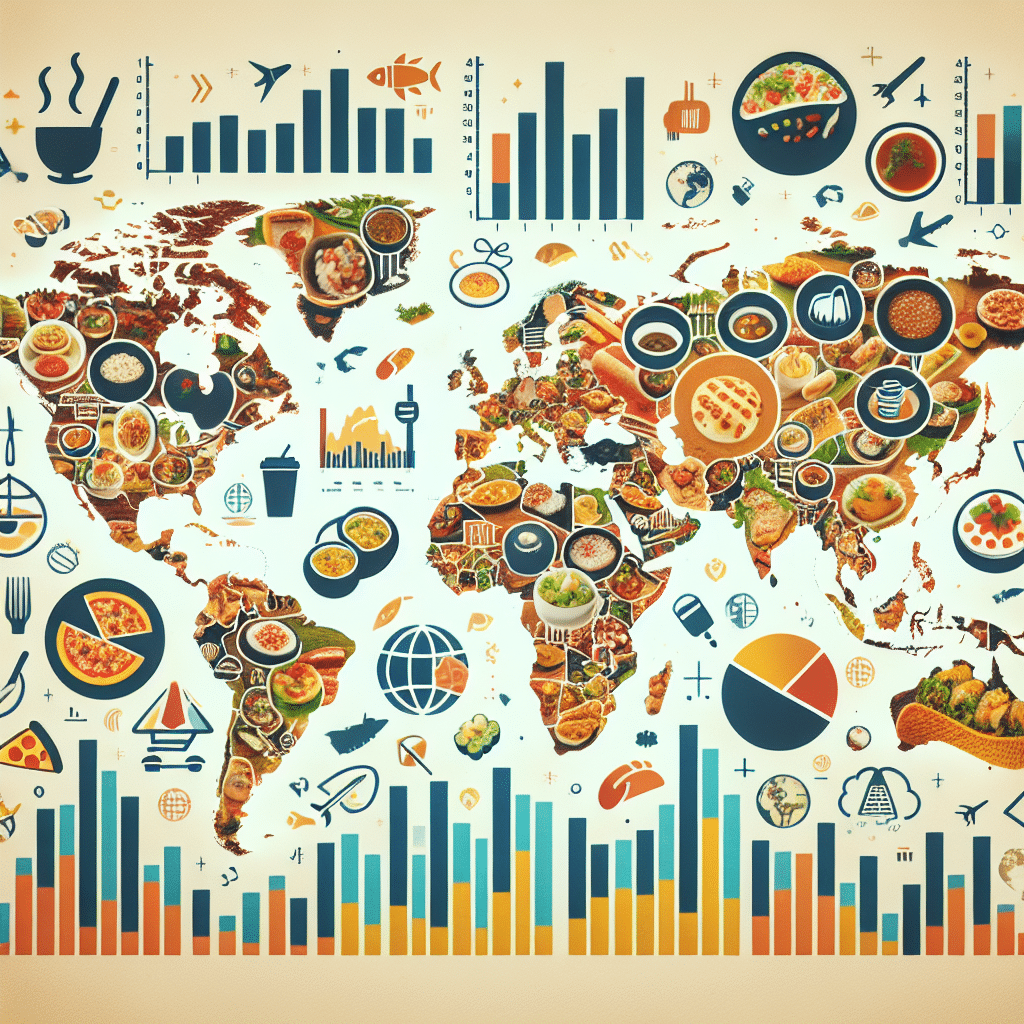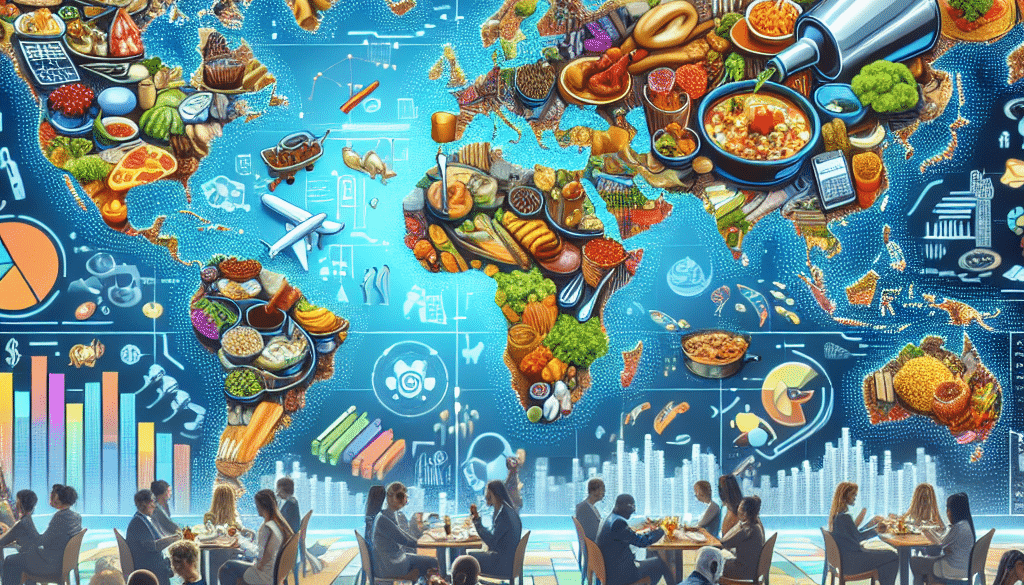Global State of the Foodservice Market
-
Table of Contents
- Foodservice Market Overview: Global Trends and Insights
- Current State of the Global Foodservice Market
- Market Growth and Projections
- Technological Innovations
- Health and Sustainability Trends
- Challenges Facing the Foodservice Industry
- Labor Shortages and Rising Costs
- Health and Safety Regulations
- Competition and Market Saturation
- Case Studies and Success Stories
- Adoption of Ghost Kitchens
- Focus on Local and Organic Offerings
- Embracing Digital Transformation
- Statistics and Market Data
- Conclusion: Key Takeaways from the Global Foodservice Market
- ETChem’s Protein Products: Enhancing Foodservice Offerings
Foodservice Market Overview: Global Trends and Insights

The foodservice industry is a dynamic and ever-evolving sector that plays a crucial role in the global economy. With changing consumer preferences, technological advancements, and economic shifts, the state of the foodservice market is a reflection of broader societal trends. This article delves into the current landscape of the global foodservice market, examining key trends, challenges, and opportunities that are shaping the industry.
Current State of the Global Foodservice Market
The global foodservice market encompasses a wide range of establishments, including restaurants, cafes, fast-food outlets, catering services, and institutional food services. Despite facing significant challenges due to the COVID-19 pandemic, the industry has shown remarkable resilience and adaptability. As of 2023, the market is on a path to recovery, with many segments experiencing a return to pre-pandemic levels of activity.
Market Growth and Projections
Recent reports suggest that the global foodservice market is expected to grow steadily in the coming years. Factors contributing to this growth include urbanization, rising disposable incomes, and the increasing popularity of dining out. The Asia-Pacific region, in particular, is anticipated to witness substantial growth due to its large population and growing middle class.
Technological Innovations
Technology has become a key driver in the foodservice industry, with innovations such as online ordering, delivery apps, and contactless payment systems becoming increasingly prevalent. These technologies not only enhance customer convenience but also streamline operations for foodservice providers.
Health and Sustainability Trends
Consumers are becoming more health-conscious and environmentally aware, leading to a surge in demand for healthier menu options and sustainable practices within the foodservice industry. Plant-based diets, locally sourced ingredients, and eco-friendly packaging are just a few examples of how the market is responding to these consumer preferences.
Challenges Facing the Foodservice Industry
Despite the optimistic growth projections, the foodservice market faces several challenges that could impact its trajectory.
Labor Shortages and Rising Costs
Labor shortages have become a significant issue for the foodservice industry, particularly in developed countries. This, coupled with rising food costs and operational expenses, is putting pressure on profit margins for many businesses.
Health and Safety Regulations
The pandemic has heightened awareness around health and safety, leading to stricter regulations for foodservice establishments. Adapting to these new standards requires additional resources and can be a hurdle for smaller operators.
Competition and Market Saturation
The foodservice market is highly competitive, with a vast number of players vying for consumer attention. In some areas, market saturation is making it difficult for new entrants to gain a foothold and for existing businesses to maintain their market share.
Case Studies and Success Stories
Despite these challenges, there are numerous success stories within the foodservice industry that highlight the potential for innovation and growth.
Adoption of Ghost Kitchens
One notable trend is the rise of ghost kitchens, which are delivery-only foodservice operations. These businesses have lower overhead costs and can quickly adapt to changing consumer demands, making them a successful model in the current market.
Focus on Local and Organic Offerings
Restaurants that have pivoted to offering locally sourced and organic menu items have also seen success by tapping into the consumer demand for healthier and more sustainable food options.
Embracing Digital Transformation
Establishments that have embraced digital transformation, including the use of AI for personalized recommendations and robotics for food preparation, are setting new standards for efficiency and customer experience.
Statistics and Market Data
- According to a report by Grand View Research, the global foodservice market size was valued at USD 3.4 trillion in 2021 and is expected to grow at a compound annual growth rate (CAGR) of 4.8% from 2022 to 2030.
- A study by Technavio predicts that the online food delivery services market will grow by USD 104.45 billion during 2019-2023, driven by the convenience of app-based ordering.
- The National Restaurant Association reported that 70% of consumers say that the availability of healthy menu options would make them choose one restaurant over another.
Conclusion: Key Takeaways from the Global Foodservice Market
The global foodservice market is a complex and multifaceted industry that is influenced by a variety of factors. While the market faces challenges such as labor shortages, rising costs, and stringent health regulations, there are also significant opportunities for growth and innovation. Technological advancements, a shift towards health and sustainability, and the ability to adapt to changing consumer behaviors are key to success in this competitive landscape.
ETChem’s Protein Products: Enhancing Foodservice Offerings
As the foodservice industry continues to evolve, there is a growing need for high-quality protein products that cater to health-conscious consumers and dietary trends. ETChem’s range of collagen products, including marine collagen, fish collagen, bovine collagen, and more, offer foodservice providers the opportunity to enhance their menu offerings with nutritious and sustainable protein options.
ETChem’s collagens are known for their neutral taste and instant solubility, making them an ideal ingredient for a variety of applications, from beverages to main dishes. By incorporating ETChem’s protein products into their menus, foodservice businesses can meet the demands of today’s health-focused consumers while also differentiating themselves in a crowded market.
About ETChem:
ETChem, a reputable Chinese Collagen factory manufacturer and supplier, is renowned for producing, stocking, exporting, and delivering the highest quality collagens. They include marine collagen, fish collagen, bovine collagen, chicken collagen, type I collagen, type II collagen and type III collagen etc. Their offerings, characterized by a neutral taste, instant solubility attributes, cater to a diverse range of industries. They serve nutraceutical, pharmaceutical, cosmeceutical, veterinary, as well as food and beverage finished product distributors, traders, and manufacturers across Europe, USA, Canada, Australia, Thailand, Japan, Korea, Brazil, and Chile, among others.
ETChem specialization includes exporting and delivering tailor-made collagen powder and finished collagen nutritional supplements. Their extensive product range covers sectors like Food and Beverage, Sports Nutrition, Weight Management, Dietary Supplements, Health and Wellness Products, ensuring comprehensive solutions to meet all your protein needs.
As a trusted company by leading global food and beverage brands and Fortune 500 companies, ETChem reinforces China’s reputation in the global arena. For more information or to sample their products, please contact them and email karen(at)et-chem.com today.




